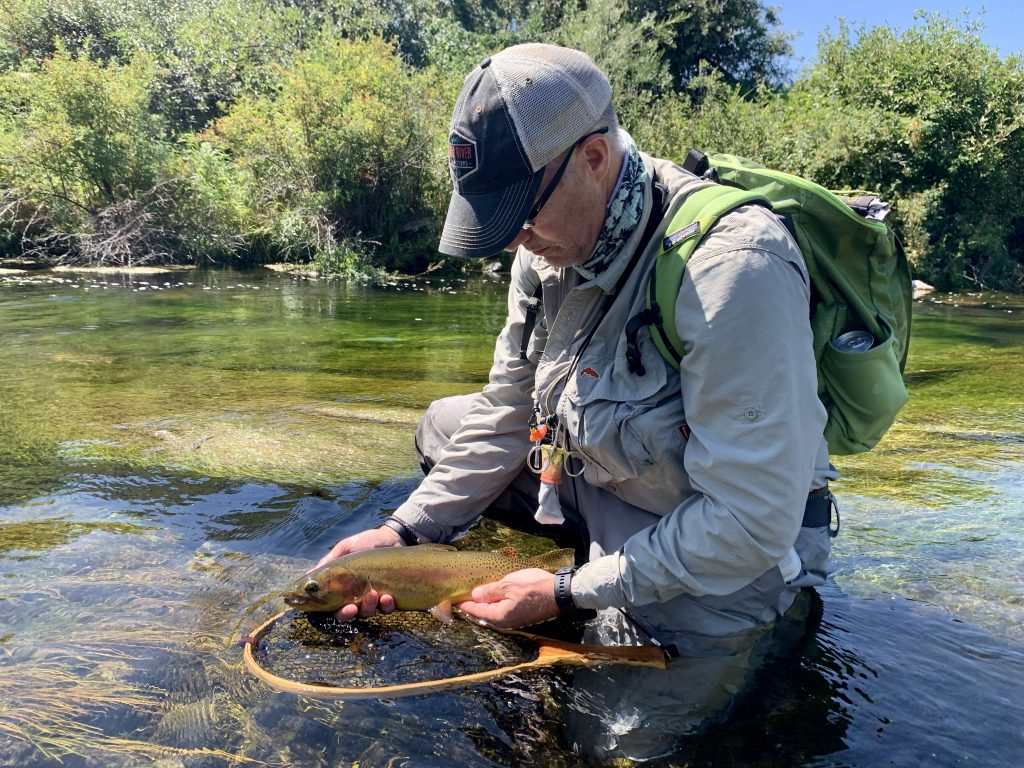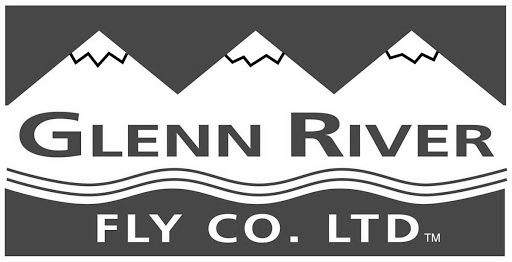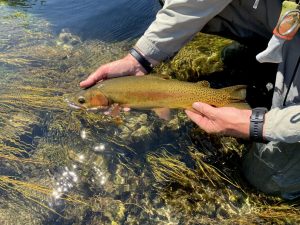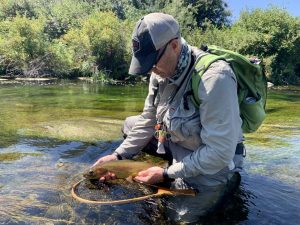Most fly fishers know the secret ……… sub-surface, aquatic insects account for over 90% of a Trout’s typical diet. And, they also know all the “go-to” patterns to use when nymph fishing, such as the infamous Gold Ribbed Hare’s Ear, the legendary Pheasant Tail and the super productive Copper John, to name a few. So why try to reinvent the wheel and come up with a new pattern anyway? Because that’s exactly what some of us do! Sometimes for no other reason than everything else already works and we have that certain sickness that makes us wonder if something else might work? It is with that twisted logic in mind, that the Clark Creek Caddis “series” was created.
Clark Creek is a 30 mile long tributary of the Susquehanna River in Dauphin County Pennsylvania. It is named after the family that settled along its banks in the early 1700’s. For the fly fisher, perhaps the most interesting part of Clark Creek is the 15 or so miles south of DeHart Reservoir. This 20-35 foot wide section of stream features a thick forest canopy which offers both beauty and cool water temperatures. And, by the way, it is stocked with Trout and plenty of holdovers! Heck, the Appalachian Trail is nearby which features Stony and Second mountains producing plenty of fantastic views as well as activities for avid hikers, etc.
Making annual trips to my birth sate of Pennsylvania for years, I was fortunate enough to “discover” Clark Creek and fish it many times. Fishing like a mountain freestone stream, quite a few techniques, strategies and fly patterns worked. We fished dry / dropper rigs, terrestrials, and small streamers, all with success. So why mess it up by creating a new fly pattern………because like I said, some of us are jut wired to fix what ain’t broken.
The stream seemed to have Caddis around on almost every trip- whether larva, pupa or adults. An up-stream presentation with a dry/dropper rig of an Elk Hair Caddis and a beadhead or wire bodied soft hackle was not only a fun way to fish, but very productive. What I noticed though was, a Copper John seemed to be too heavy for the water size and the soft hackles seemed to be too light for the current speed. So my thought was to build a beadhead nymph that looked like a Caddis, had enough weight to get down (but not too much) and also had movement like a soft hackle. The following is a summary with talking points for each stage of the fly
Hook– obviously, as with many patterns, various hooks will work. The Daiichi 1270 (Stimulator) hook has a York bend and the Daiichi 1260 (Terrestrial) hook has a round bend. Both make great nymph hooks and can be used with beads. We prefer these two hooks for their shape and longer profile.
Body– our goal was to use a dubbing blend so the tier would be able to control the body shape, color and flash. Various dubbings were used, but ultimately, the dubbing that seemed to hit on all of our points was Krystal Dub from Hareline. It is a rabbit based dubbing with small amounts of krystal flash blended in. The natural hair makes it very easy to dub with and the flash is just the right quantity.
Our Clark Creek Caddis Fly-Kit features several dubbing colors so you can tie Green, Tan, Cinnamon and Olive Caddis.
Wingcase– our goal with the wingcase was to provide the appearance of a wing assembly during emergence but also act as a divider between the thorax/collar and body. Many fly patterns have “full” thorax and leg assembly (hackle) which is often way darker than the body color….and it covers or blocks out the body color. For these reasons, we settled on pheasant tail fibers. They are the perfect color and stiffness to provide this functionality.
Thorax– a lot of today’s nymph patterns have a dubbed thorax which offers little movement or a hackle concept- which obviously features plenty of movement. Our goal was to find a long stranded multi purpose blended dubbing, that could be inserted into a dubbing loop and wound around the entire fly. This way, a pronounced thorax could be formed of a darker color, fibers could be picked out for legs and the entire “collar” would create movement and push or trap air bubbles….all without compromising body color. The dubbing we finally settled on to accomplish these goals is Whitlock SLF Dragonfly Nymph Dark.




